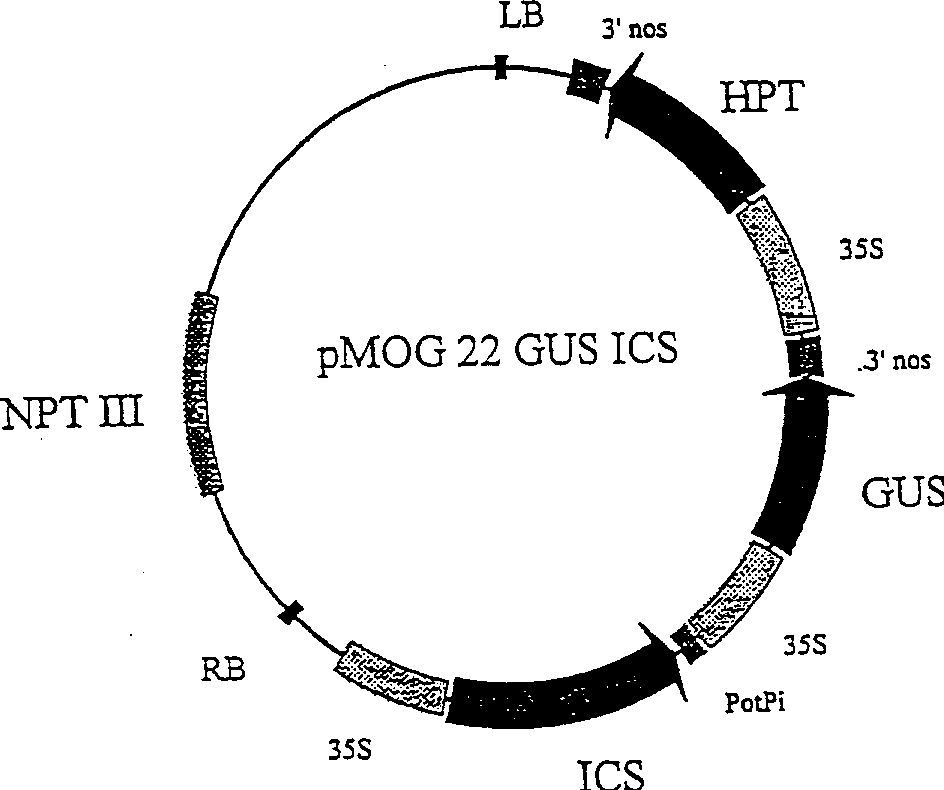Salicylate pathway gene and its use for induction of resistance in plants
A gene and resistance technology, applied in the field of salicylic acid biosynthesis pathway, can solve problems such as can not weaken allergic reactions
- Summary
- Abstract
- Description
- Claims
- Application Information
AI Technical Summary
Problems solved by technology
Method used
Image
Examples
Embodiment 1
[0065] Purification of periwinkle ICS
[0066] Periwinkle (L.) was cultured in MS medium (Murashige and Skoog, 1962) supplemented with 30 g / l sucrose as previously described (Moreno, P. et al., Plant Cell Reports 12, 702-705, 1993). G. Don cell culture. Cell cultures were challenged with Pythium aphanisermatum (CBS, Baarn, Netherlands) filtrate as described by Moreno et al. (1993). After 24 hours of stimulation, the cells were collected by suction, washed once with water, immediately frozen in liquid nitrogen, and stored at -80°C. 600 g of frozen cells were homogenized in a Waring Blender equipped with a stainless steel bucket. Add 1ml extraction buffer (0.1M Tris-HCl pH7.5, 10% glycerol (v / v), 1mM DTT, 0.2mM PMSF, 10μM leupeptin and 1mM EDTA) and 50mg polyvinylpyrrolidone per gram of fresh weight . After thawing, the homogenate was centrifuged at 10,000g for 30 minutes to remove cell debris. The supernatant is called crude extract. The following operat...
Embodiment 2
[0070] Cloning of ICS Gene of Vinca
[0071] The ICSII-containing protein band was isolated from a native PAGE gel and digested with trypsin to yield approximately 50 peptides. Five of these peptides were isolated and sequenced. One of these peptides shows high homology to the bacterial isochoristate synthase sequence. Therefore, degenerate primers against this peptide were prepared. A PCR reaction against the primed Vinca cell culture cDNA library using this primer and the T7 primer of pBluescript generated a 520 bp fragment. This fragment was cloned and sequenced. A cDNA library of primed periwinkle cell cultures was screened with the 440 bp amplified DNA fragment. Screening of 450,000 plaques identified 52 independent positive plaques. Twelve of them were isolated and screened a second time with the same 440bp probe. This resulted in the identification of 7 independent positive plaques. They were dissected and partially sequenced in vivo. The longest...
Embodiment 3
[0077] EntC / orfD constructs
[0078]The entC coding sequence was isolated using a PCR strategy on E. coli genomic DNA (Ozenberger et al., J. Bacteriol. 171, 775-783, 1989). For this, primer 1 (SEQ ID NO: 1) and primer 2 (SEQ ID NO: 2) were used. This will amplify the entire coding region of entC and add additional BamHI sites to both ends. This fragment was cloned into vector pMOG843 in which a BamHI site was introduced into a HindIII site via a linker sequence. The resulting pMOG834B-entC contained the entC coding sequence bound to the 35S CaMV promoter, followed by the potato PI-II 3' untranslated sequence. The 35S-entC-PI cassette was then transferred into pIC20H by XbaI digestion and cloning into the XbaI site of pIC20H. A partial XbaI digestion of pIC20H was used. Thus, the cassette is located in the XbaI site flanked by EcoRV sites. The resulting vector was named pIC20H-entC.
[0079] A chloroplast transit peptide (called ss) was isolated from tob...
PUM
| Property | Measurement | Unit |
|---|---|---|
| Diameter | aaaaa | aaaaa |
Abstract
Description
Claims
Application Information
 Login to View More
Login to View More - R&D
- Intellectual Property
- Life Sciences
- Materials
- Tech Scout
- Unparalleled Data Quality
- Higher Quality Content
- 60% Fewer Hallucinations
Browse by: Latest US Patents, China's latest patents, Technical Efficacy Thesaurus, Application Domain, Technology Topic, Popular Technical Reports.
© 2025 PatSnap. All rights reserved.Legal|Privacy policy|Modern Slavery Act Transparency Statement|Sitemap|About US| Contact US: help@patsnap.com



